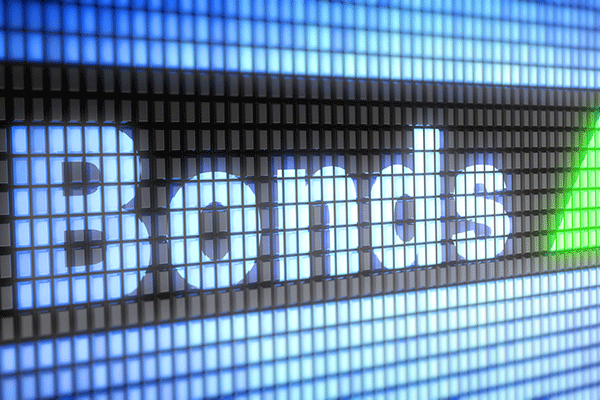Bond Watch: is it time to buy riskier bonds?
27th January 2023 09:30
by Sam Benstead from interactive investor
Sam Benstead breaks down the latest news affecting bond investors.

Welcome to interactive investor’s ‘Bond Watch’ series, covering the latest market and economic news – as well as analysis – that is relevant to bond investors.
Our goal is to make the notoriously complicated world of bond investing simpler, by analysing the week’s most important news and distilling it into a short, useful and accessible article for DIY investors.
- Discover our resources on: Buy Bonds | Free regular investing | General Investing with ii
Here’s what you need to know this week.
Will risky bonds perform well this year?
Bonds have a clear risk ranking, determined by how much they yield. Higher yields signal more risk, as investors are demanding a greater return for lending their money to a company or government.
One of the riskier parts of the market is high-yield bonds, where less financially secure companies tap investors for cash and reward them with greater income payments than the debt of more established companies.
Tom Hanson, of Aegon Asset Management, thinks that adding fixed income risk this year will turn out to be a savvy move.
“High-yield bonds are currently offering an attractive entry point and will present further compelling opportunities over the course of 2023.
“Over the last 10 years there have been very few opportunities to access the market on a yield above 8%. Historically, investing when yields were above 8% resulted in above-average total returns,” he said.
- Ask ii: when will bonds recover and boost my multi-asset portfolios?
- The highest yielding and most-popular sterling bond funds
Hanson calculates that since 2008, yields above 8% have historically proved to be attractive entry points. For the months when the starting yield was above 8%, the average forward annualised returns ranged from about 11% to 19% over a one-, three- and five-year basis for the ICE BofA Global High Yield index, according to Hanson.
Hanson says that high-yield spreads (the extra yield demanded above the safest bonds of similar maturity) do not yet definitively point to a recession – but spreads could certainly widen further in view of the uncertain economic outlook.
“If the recession is relatively short and shallow, elevated spreads could prove short-lived and be followed by a sharp snapback. These environments have historically created compelling entry points and provided outsized forward returns for investors with a longer time horizon,” Hanson said.
Negative yielding debt is no more
For the first time since 2014, there are no negatively yielding bonds. The phenomenon of locking in a negative return by buying a bond, when not accounting for inflation, was caused by central banks pushing interest rates near to zero and investors still deciding to buy the safest bonds and pushing yields into negative territory.
Jim Reid, a bond strategist at Deutsche Bank, calculates that just two years ago there was $18.4 trillion (£14.8 trillion) and more than 4,000 bonds with negative yields.
Reid said: “Will we ever see the 2014-2022 era again? Before this point most people would have thought negative-yielding debt was an inconceivable concept. While there is no value in buying negative yielding debt, especially in a fiat world where inflation will always likely be positive, you can’t rule out central banks having to buy large amounts of debt again in the future. However, for now this looks set to be the welcome end of an era as some value returns to global fixed income.”
The last negative yielding bond holdouts were Japanese government bonds, but that all changed this year when the Japanese central bank cut back its bond-buying programme, allowing yields to rise.
Good economic data keeps coming
More encouraging economic data has come out of the US and UK over the past week. In Britain, inflation kept falling, dropping to 9.2% growth in the 12 months to December, down from 10.7% in November and 11.1% in October. In the US, inflation is already at 6.5%.
This week, US gross domestic product increased in the final three months of 2022 by 2.9%, faster than the 2.6% forecast.
- Why the 60/40 portfolio still makes sense
- Watch Sam Benstead's video: My high-yield bond market tip for 2023
This shows that despite sharp US interest rate rises, the economy is in good shape and there is a good chance of a “soft landing” where inflation falls back to the 2% central bank targets and recessions are avoided.
Strong economic data, so long as it doesn’t point to higher prices, is good news for stock and bond markets.
These articles are provided for information purposes only. Occasionally, an opinion about whether to buy or sell a specific investment may be provided by third parties. The content is not intended to be a personal recommendation to buy or sell any financial instrument or product, or to adopt any investment strategy as it is not provided based on an assessment of your investing knowledge and experience, your financial situation or your investment objectives. The value of your investments, and the income derived from them, may go down as well as up. You may not get back all the money that you invest. The investments referred to in this article may not be suitable for all investors, and if in doubt, an investor should seek advice from a qualified investment adviser.
Full performance can be found on the company or index summary page on the interactive investor website. Simply click on the company's or index name highlighted in the article.